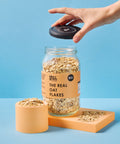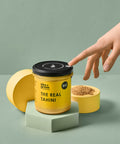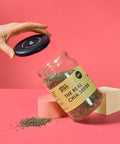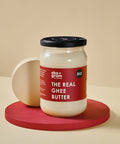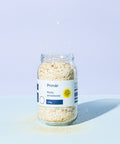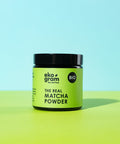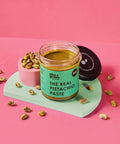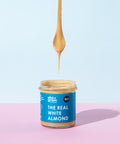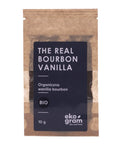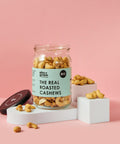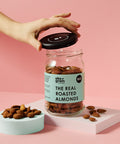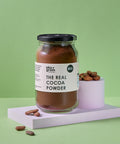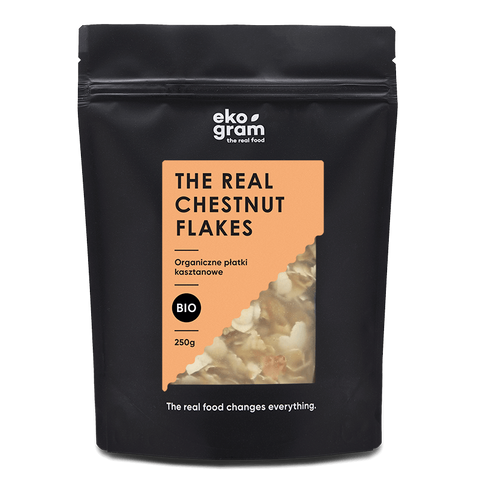2 products
Over the years, chestnut was not particularly present in Polish consciousness - everyone knew that something like this was eaten, but hardly anyone had the opportunity (and the desire) to try it. Today, chestnuts are part of our kitchen. More and more often they find a place in restaurants and kitchen cabinets. In our store you can buy chestnut flour and chestnut flakes - products are made of edible chestnuts that come from organic farming. This is an excellent proposition for people who, for various reasons, limit products with a high content of gluten, but are looking for products with properties similar to wheat flour.
Chestnut - what is worth knowing
The edible chestnut is a powerful tree of Mediterranean origin that belongs to the beech family. However, it is not related to our horse chestnut. In its natural environment, the edible chestnut can reach a height of up to forty meters (so it is larger than the native chestnut), its leaves are single (up to 18 cm) and are characterized by an oblong lanceolate shape and serrated edges. Chestnut inflorescences have an interesting, loose shape, reaching a length of about fifteen centimeters and have a light pale yellow or greenish color. The fruit of the chestnut is a nut about 3 cm in size. Two or three of these fruits are covered with a common cover with thorns, which makes them similar to our chestnuts. Chestnuts ripen in the fall - mainly October and November. However, for the fruit to fully mature, a long period of good weather in late summer is necessary.
Where chestnuts grow
Edible chestnuts are long-lived - they can live up to 500 years. The oldest trees growing today still remember the times when France was ruled by a king, and there were many small Italian states on the Apennine Peninsula. The edible chestnut emigrated from its original territory during the times of the Roman Empire. It was then that it spread in Western Europe - mainly in France and Italy, and in Central Europe, incl. in today's Hungary. Today, edible chestnuts are found in southern Europe, Asia Minor, northern Africa and the Caucasus, often forming entire chestnut forests. Planted chestnuts, as one of the few trees in the Mediterranean basin, also grow in the cooler climate of Central Europe. In general, however, they are natural curiosities in parks, gardens or private lovers. Planting chestnut is therefore also possible in Poland - it is enough to have the right conditions and remember that in the long run the tree will not fit in an apartment or even on a balcony. In a moderate climate, this tree does not grow as well as in warmer areas, but it will also not freeze during the first frost (it is worth keeping young trees in a warmer place in winter). During severe winters, with temperatures below -20 degrees Celsius - especially in open and windy terrain - it is worth providing additional protection. The very planting of the chestnut is also easy. You can use both seedlings and fresh chestnuts for this.
Are chestnuts edible - 4 facts you should know
Chestnuts are edible, but only those ... edible. As we have already mentioned, the horse chestnut is unfortunately not related to the Polish horse chestnut. The same is also with their fruits. While the chestnut fruit is safe to eat - even raw - the chestnut fruit is not suitable for eating. In addition, you can use products such as chestnut flour or chestnut flakes in the kitchen. Below you will find 4 facts about edible chestnuts that will help you get to know the product even better.
The properties of the edible chestnut have been known since antiquity. The Romans willingly planted trees in various parts of the empire because they were a reliable source of food that was relatively easy to store. It was no different in the early Middle Ages, when chestnuts were widely eaten in all strata of society. Since the late Middle Ages, the popularity of chestnuts has waned. The fruit was more and more often identified with the social lowlands. In many regions of Southern Europe, edible chestnuts were the basis of the winter diet of less wealthy people almost until the 19th century.
The consumption of chestnuts was negatively influenced, among others, by chestnut blight in the 17th and 18th centuries which limited the population of this tree. The growing popularity of potatoes and maize was also to blame. The decreasing importance of edible chestnuts in the diet of peasants meant that the fruit returned to the courts. They began to be used to make exquisite appetizers and desserts (e.g. caramelized chestnuts), and also to add them to many dishes.
Today, chestnuts are quite popular, but they have completely lost their "peasant food" character. Italy and southern France remained the true chestnuts. The second region (department of the Ardèche) is the source of the most prized fruit, and the production of local plantations accounts for about 50% of the total chestnut harvest in France. The best chestnuts certainly do not grow in Paris' Pigalle Square - that's where you can eat this delicacy in a restaurant or buy it in a store.
The renewed trend for chestnuts is associated with the fact that people often do not know where to buy healthy, least processed food. The chestnut fruit consumed today is no different from centuries ago, and some trees date back to before the electricity era. The chestnuts were fortunate that few people remembered about them during the development of industrial agriculture. Thanks to this, there are no typical industrial crosses of this fruit today. The popularity of edible chestnuts is of course also influenced by the fact that they are healthy, tasty and suitable for people of all ages - also for people with food allergies.
Edible chestnuts - properties
Chestnut fruit is a valuable supplement to any diet. What's more, they contain trace amounts of gluten - thanks to this, products such as chestnut flour or BIO chestnut flakes are perfect for people who want to limit their consumption. Chestnut flour and chestnut flakes have many beneficial properties for the human body. Above all, however, chestnut products have a characteristic, slightly sweet and nutty flavor that will perfectly complement the dishes and pastries you prepare. You also don't have to worry about the calories typical of nuts. Eating even a few chestnuts as a snack or adding two or three tablespoons of cereal to your salad will not turn your meal into a calorie bomb, and it will certainly give you a lot of fun! Your body will thank you for a well-balanced diet.
Preparation of edible chestnuts
You can eat chestnuts in many ways - both raw and cooked. Chestnut flour, the properties of which resemble wheat flour, also offers many possibilities in the kitchen. Thanks to this, you can eat pancakes, pancakes, waffles and other dishes straight from the milk bar. In turn, eco chestnut flakes will be a great addition to cocktails, porridges, yoghurts, salads - you can also treat them as a healthy snack. How to choose the best edible chestnuts? In the case of Poland, in principle, it will always be imported fruit. However, when you go abroad, you can find local fruit sold in bazaars or shops. If you have such an opportunity, check that the chestnuts are completely shelled and have no cavities or discoloration. In addition, nothing in the chestnut can "knock", and the fruit itself should be quite heavy (a good chestnut thrown into the water will drown, if it stays afloat, it is probably wormy or rotten). You can store raw edible chestnuts for a week or so in a cool, dry place (preferably in the refrigerator). If you want to eat them at a later date, it is best to freeze them - cutting them first so that they do not break.
How chestnuts are used in different countries
You will probably not be surprised that in each country, chestnuts not only have a different price (the import itself makes the price higher), but also differently used in the kitchen. In France, apart from the popular, street version, chestnuts are also eaten around Christmas. The fruit is then used in the stuffing of a traditional roast turkey. Our western neighbors, on the other hand, enjoy the aromatic chestnut soup. In Hungary and Slovakia, on the other hand, mashed chestnut puree is popular, eaten fresh or raw - as an addition to desserts, ice cream or meat.
How to bake edible chestnuts
The best known method of preparing chestnuts in Poland is baking them. The recipe is not difficult - it only takes four steps.
Preparation - rinse chestnuts with warm water, and then cut their shell with a knife (preferably in the "X" from the tip).
Baking - the cut chestnuts should be evenly spread on a baking tray and put in a preheated oven to about 200 degrees Celsius for about 15 minutes.
Serving - after baking, the chestnuts should be slightly cooled and it is best to serve them while still warm.
Always incise chestnuts when baking them - otherwise they may explode. The incision also makes it easier to eat chestnuts. This makes it easier to get to the chestnut flesh. Also remember that as it cools down, peeling the hard shell of the fruit will become more and more difficult, although we do not believe that any chestnut will be left on the plate for so long that it has time to cool ...
An interesting alternative for lovers of baked chestnuts is their roasting (because the oven is not always at hand). In this case, proceed in the same way as for baking, with the difference that you have to put the cut fruit in the pan and fry, covered, for about 10 minutes. Follow the steps in exactly the same way as for baking.
What to use chestnut flour for
Of course, baked chestnuts are not the only option. Chestnut flour is used as the basis of dishes, an addition to traditional wheat flour (or any other flour) or a thickener for soups and sauces. It also works well in pancakes, muffins, waffles and pasta. Thanks to chestnut flour, dishes acquire a sweet taste, nutty aroma and brown color. For this reason, it is perfect for desserts with sweet additions, or as an addition to spicy dishes or meat. Cakes with the addition of chestnut flour will work perfectly well with roots, nuts or chocolate. Remember, however, that if you completely replace traditional flour with it, the baked goods will not rise as usual. You can also use the aromatic chestnut flour for baking bread. In most recipes, chestnut flour is mixed with other flours.
How to use chestnut flakes in the kitchen
It is also worth having chestnut flakes in the kitchen cupboard - in unprocessed form they are a tasty and healthy snack, but you can use them as an addition to various dishes. You can use them for: yoghurt, muesli, salad, porridge, smoothie, fritters, any dessert. However, you will use BIO chestnut flakes not only in light dishes. Aromatic and sweet flakes will perfectly emphasize the taste of roasted meats, especially game and poultry. They can be used as an addition to your own sauce, or as an element of stuffing, for example, goose. They will also work well in vegetable dishes - stews with chickpeas, lentils or beans.
Chestnuts in the Ekogram store
If you're wondering where to buy chestnuts, our health food store is here to help. All fruits that we use to produce flour and flakes come from organic, certified crops in Italy. Each of the products comes from an ongoing supply, so you can be sure that you are buying fresh flour or chestnut flakes. At the same time, we try to make the price of chestnuts as affordable as possible for you. Check also Herbal teas Organic juices Dried fruits Legumes Natural spices Vegetable proteins Natural rice



